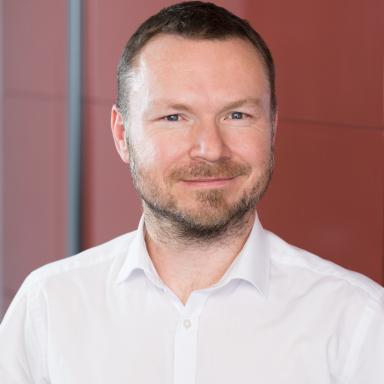Summary of the TF HTAP meeting at IASS Potsdam
The Task Force on Hemispheric Transport of Air Pollution met at IASS Potsdam, Germany, on April 25-26 2019. Approximately 30 people attended the meeting, including representatives of TF IAM and CIAM, who had just attended the 48th meeting of TF IAM in Berlin over the previous 2 days. Terry Keating (US Environmental Protection Agency, TF HTAP chair) chaired the meeting. Tim Butler (IASS Potsdam, local organiser) welcomed TF HTAP to Potsdam and opened the meeting.
This report is not a summary of all presentations and discussions which took place during the meeting, but is rather intended to inform the community about the priorities of TF HTAP over the short, medium, and long terms, as discussed at the meeting. Interested community members are encouraged to get involved in these activities.
Contents:
- New Leadership Structure
- Draft Report on Lessons Learned from HTAP2
- Trend Attribution and the Gothenburg Protocol Review
- Shipping and Methane
- Updated Global Emissions
- Other Future Priorities and Directions
New Leadership Structure
In December, Frank Dentener (JRC, Ispra) stepped down as co-chair of the Task Force. A new leadership structure has been proposed for consideration by the EMEP Steering Body (in September) and LRTAP Executive Body (in December):
- Co-Chairs:
Terry Keating (US Environmental Protection Agency)
Heather Morrison (Environment and Climate Change Canada) - Vice Chairs:
Tim Butler (Institute for Advanced Sustainability Studies, Potsdam, Germany)
Jacek Kaminski (Institute of Environmental Protection, National Research Institute, Poland)
Draft Report on Lessons Learned from HTAP2
Prior to the meeting in Potsdam, a draft of the summary report for the EMEP Steering Body was circulated for comment. The draft was discussed at the Potsdam meeting. Most participants agreed that the report needed to begin with an executive summary comprised of clear, simple messages about what we think we know and don’t know to make sure that these findings are effectively conveyed to the members of the EMEP Steering Body. It was agreed that Terry Keating would redraft the report with the assistance of selected individuals and recirculate it for comment
Trend Attribution and the Gothenburg Protocol Review
The most recent revisions to the Gothenburg Protocol are expected to enter into force before December 2019, triggering a decision by the Executive Body to initiate a review of the protocol’s impact. TF HTAP could contribute to such a review by assessing how extra-regional influences (emissions outside the UNECE, changes in climate and circulation) have contributed to changes in air quality and deposition within the UNECE since 2000. Over the next 2 years, this question of trend attribution to extra-regional sources is expected to be a major focus of TF HTAP’s activities.
Shipping and Methane
The review may lead to a discussion of a new or revised protocol to implement additional mitigation. Two opportunities for additional mitigation that are highlighted by HTAP2 results are emissions from marine shipping and emissions of methane. Thus, exploring how these sources and pollutants are represented in global and regional models and how our estimates of their impacts can be improved is expected to be another focus of TF HTAP’s activities over the next 2 years.
Updated Global Emissions
One of the most widely used products of TF HTAP’s past work are the global emissions mosaics developed for 2001 (HTAPv1) and 2010 (HTAPv2). There is strong interest in producing a more recent global emissions data set and an inventory that covers the trend from 2000 to present would be a key input to the trend attribution assessment discussed above. Therefore, the chairs are working to organize a small meeting of interested emissions experts to discuss alternative approaches and resource needs for developing an updated global emissions data set, taking stock of work that has been done for IPCC (e.g. CEDS), CAMS, and other efforts.
Other Future Priorities and Directions
In addition to contributing to the Gothenburg Protocol Review, we are interested in continuing, re-engaging, or initiating collaborative efforts in a number of areas important to understanding hemispheric transport and its impacts such as:
- Ozone deposition and impacts on ecosystems, and their attribution to hemispheric transport
- Inter-comparison of techniques for ozone source attribution (perturbation, tagging, adjoint sensitivity).
- Development of the reduced-form OpenFASST tool, Gap-filling of “missing” runs from the HTAP2 set including which will result in improved accessibility of the source/receptor relationships for the broader community.
- Links between air pollution and climate change.
- The Arctic as a receptor region.
- Mercury, other Heavy Metals, Persistent Organic Pollutants, and Contaminants of Emerging Concern.
Over the next year, as we work to develop a longer term plan for the next phase of cooperative work under TF HTAP, we welcome expressions of interest from the community, identification of opportunities for collaboration, comments, and suggestions on these and other potential areas of research. We recognize that progress in these work areas is driven primarily by the scientific community and its volunteer efforts. We look forward to engaging further with the community at our next “full” meeting of TF HTAP which we hope to hold in spring 2020 in Edinburgh, Scotland.
